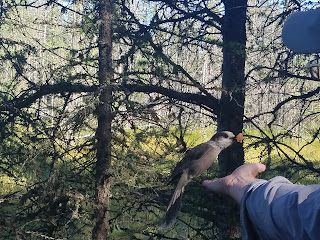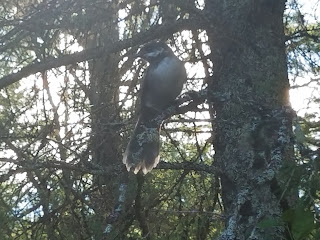Our next stop was on the way back north in the area of Holmdel because the over-wintering Canada Goose flocks had some seasonal rarities amongst the ubiquitous Canadas...Immediately we saw the two Pink-Footed Geese along Willow Brook/Long Bridge Roads, and thereafter stopped at Vonage's Corporate Headquarters and saw the Ross' Goose. While viewing the geese a rare-bird alert had my phone chiming and we headed farther north toward Somerset County's Franklin Township. This area is known for the handful of Sandhill Cranes that winter in the harvested corn fields. As luck would have it we did see 7 of the cranes in flight as we made our approach to the rare bird location.
Here we were looking for a Rock Wren, which had been found yesterday by another birder who had been in search of the Sandhill Cranes. This is how rarities are often found...while searching for other rarities. We had to wait about 30 minutes along with a few dozen other birders, and spent that time catching up with old friends & exchanging holiday greetings. About 1:30 pm the target bird was relocated and everyone present was able to get clear, as well as, lengthy scope views of the rarity.
credit: Ben Barkely
This Rock Wren is the second known record for New Jersey, with the last one occurring back in the winter of 1992-1993. This was NJ State bird # 382 for me. Here is a history of this species' records on the East Coast
Here is the species typical range. click to enlarge:
















































